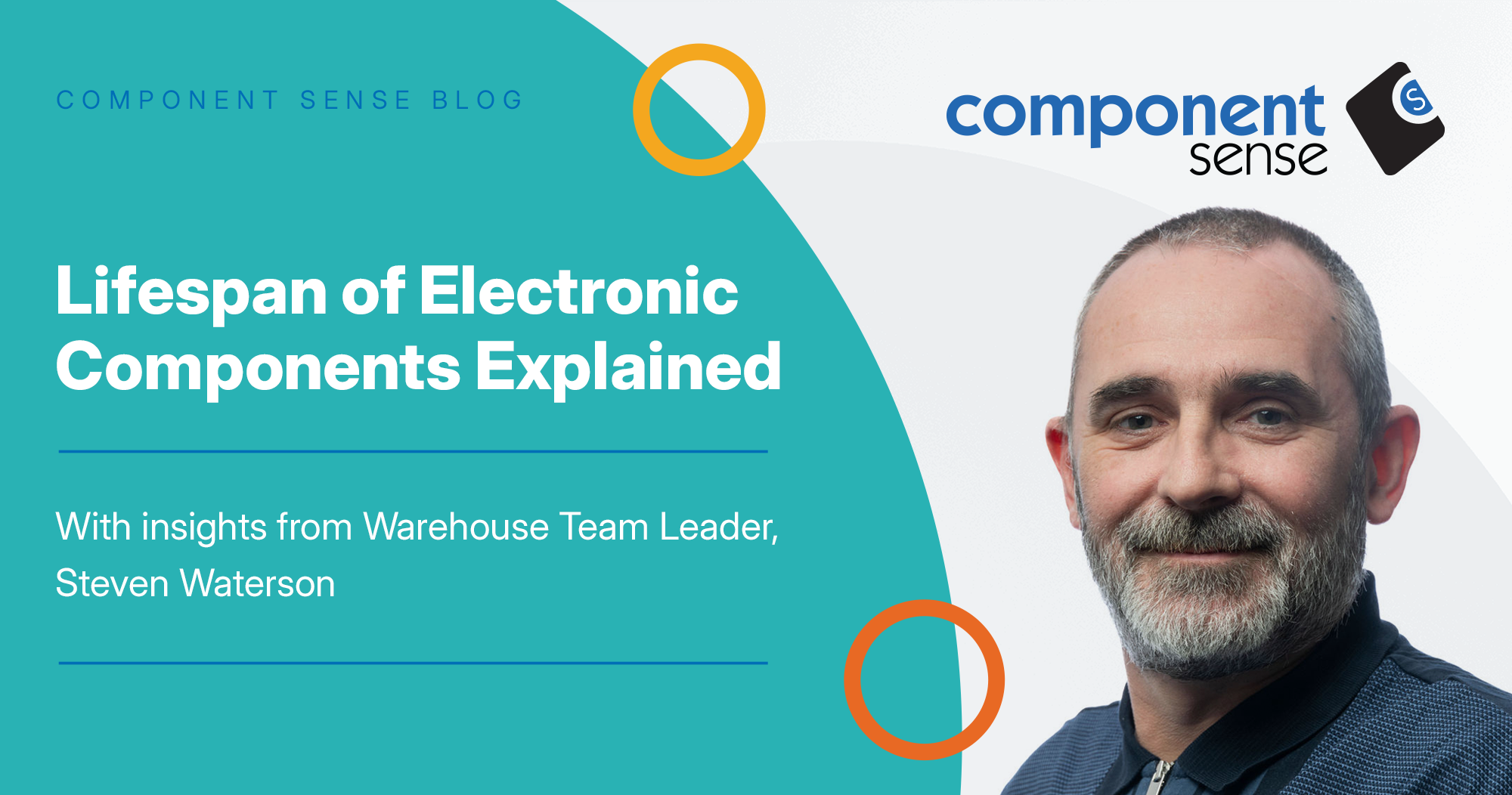Lifespan of Electronic Components Explained

Just like the milk that goes into your morning coffee, electronic components have a shelf life.
Thankfully, microchips last far far longer, and several steps can be taken to extend their lifespan.
An electronic device's lifecycle includes manufacturing, distribution, storage, production, usage, and end-of-life. As Component Sense redistributes unused components on the secondary components marketplace, this blog will focus on storage.
For procurement professionals, especially in sectors with long production timelines, knowing how long parts can stay in storage is essential.
“The shelf life is how long components can be stored while remaining usable. This all depends on manufacturing, storage conditions, and the materials used during the manufacturing process,” explains Warehouse Team Leader, Steven Waterson.
How long a component lasts
Today, component lifespans vary by type. For instance, if protected from moisture and electrostatic discharge, semiconductors can last over 15 years in storage, while capacitors may only last two to 10 years due to temperature sensitivity.
Materials play a key role in how long a component lasts. For example, pre-RoHS standards parts containing lead typically last longer than newer lead-free components. Temperature and humidity also affect deterioration, hence the need for MSL (moisture sensitivity level) packaging to prevent moisture damage and environmental damage.
 “Every component is graded by the original manufacturer when it comes to MSL. Some parts are not as prone to absorbing moisture as others,” says Steven.
“Every component is graded by the original manufacturer when it comes to MSL. Some parts are not as prone to absorbing moisture as others,” says Steven.
What component date codes mean
Put simply, a date code indicates when a component was manufactured, typically using four digits: the first two for the year, and the last two for the week. The format may vary from manufacturer to manufacturer.
Original component manufacturers often provide conservative shelf-life estimates, assuming worst-case storage conditions. With proper storage, parts can far outlast the often cautious estimates, reducing unnecessary electronic waste (e-waste). However, it is important to note that, in some industries, such as aerospace or military, adhering to shelf-life specifications from original manufacturers is a strict requirement.
“A date code is just a guideline. We have some stock in our Component Sense warehouse that is over 20 years old and has been tested to still be in good condition. These legacy parts are kept for repairing industrial machinery,” explains Steven.
Legacy stock is one of the secondary market's many sustainable and financial benefits. Read our full guide that explores why Component Sense values legacy stock and our advice for repurchasing.

How to prolong the lifespan of components
At Component Sense, our mission is to lead electronic manufacturers toward zero waste. We understand what it takes to extend the lifespan of components and implement strict measures to keep our stock in pristine condition for our buyers. Practices we implement to prolong the shelf life of components include:
-
Our warehouse is temperature-controlled to prevent corrosion and degradation
-
We use anti-static measures, including grounding equipment, to prevent damage from static electricity
-
Our humidity-controlled environment prevents moisture build-up, and we use MSL bags for extra protection when needed
“When parts are heated up, and they contain moisture, they can literally pop. This is often called 'popcorning',” says Steven.
Our inventory also goes through a rigorous quality inspection process as a last line of defence to ensure the quality of everything that we sell.

Recycling unusable components
No matter how well components are cared for, they will eventually reach the end of their lifecycle due to factors like oxidation or corrosion. Oxidisation is generally when metals lose electrons and react with oxygen.
At Component Sense, we encourage manufacturers to redistribute surplus inventory early, ensuring parts are put to use well before becoming unusable. When disposal is unavoidable, recycling is also an option to help recover valuable elements and keep them in a circular supply chain.
While technology is always advancing, current e-waste recycling methods have both sustainability merits and challenges. Less than a quarter of e-waste in 2022 was documented as having been properly collected and recycled. Common practices include:
-
Pyrometallurgical recycling: Heating e-waste to high temperatures
-
Bioleaching: Using microorganisms to break down e-waste
-
Hydrometallurgical recycling: Applying chemicals to dissolve e-waste
Purchase excess electronic components with Component Sense
Procurement professionals can take simple steps to protect their supply chain when sourcing components nearing or past a two-year lifespan. By ensuring suppliers use proper storage, conduct rigorous quality inspections, and provide full traceability, they can secure components that are pristine and as new.
Purchasing from an electronic parts supplier like Component Sense, which carefully maintains inventory, allows procurement professionals to access and buy hard-to-find electronic components, save on their BOM, and reduce e-waste. Explore our range of unused components online today.